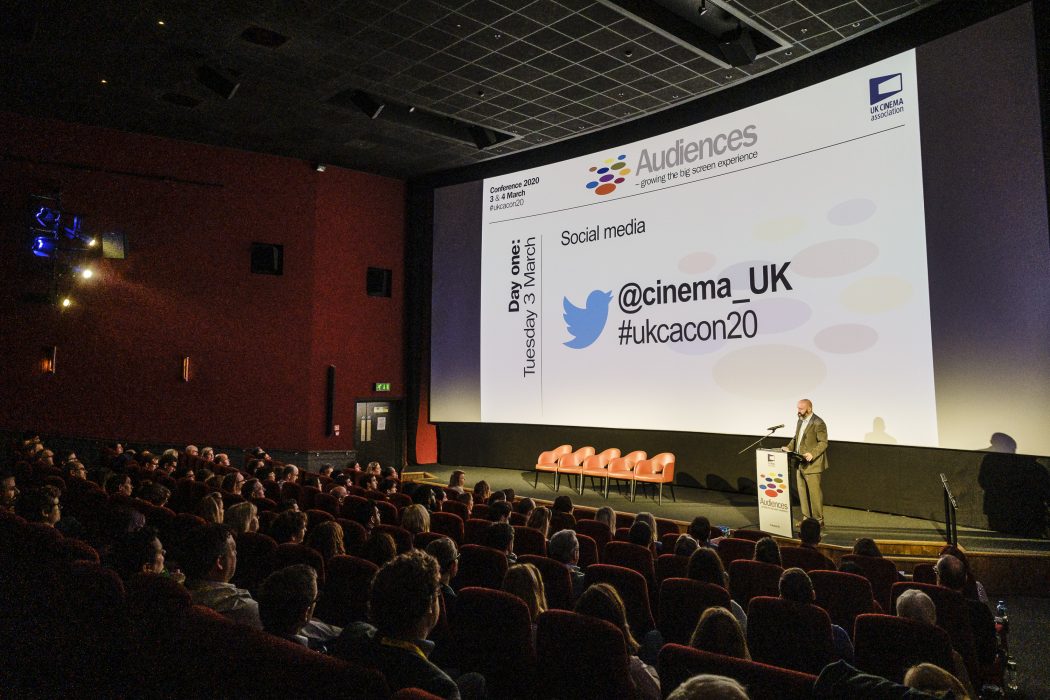Programmer Claire Vaughn discusses the key takeaways for venues and exhibitors from this year’s UK Cinema Association conference, which focused on the ‘growing the big screen experience’.
The UK cinema exhibition sector is a broad church, with single screen rural venues sharing the stage with some of the biggest commercial companies to talk reaching new audiences, making the industry more financially sustainable. Opening with a warm speech from filmmaker Edgar Wright on why the communal big screen experience is semi-religious, with its sense of ritual and grandeur makes a film more magical.
There is a very real threat to ignoring young and diverse audiences, as Industry Trust for IP Awareness showed increasing figures of the general population relying on other ways of consuming content in habit-forming ways (streaming, both legally and illegally) with 1 in 3 young people aged 11 – 15 streaming illegally, nearly 10% more than 5 years ago. However, there was some good news. Comscore research showed that the more streaming services you have the more likely you are to go to the cinema, so the doom and gloom that Netflix is killing cinema could be misguided.
All sizes of cinemas are embracing to be more bespoke including Vue, and from the independent sector we heard from Jamjar, Whitley Bay; Hippodrome, Bo’Ness; Zeffirelli’s, Ambleside and working to be accessible in cities Phoenix, Leicester; and Tyneside, Newcastle; and Rio Dalston, London.
Eventising big screen content (be it films, theatre or concerts) to increase audiences has been the biggest story of the past 10 years. NT Live spoke about course-correcting to bring in younger audiences and the huge success of Fleabag showing that this has been a success.
Research from BFI into BAME audiences showed that work is urgently needed to increase audience development in this area (with only 11% of the BAME audience coming to independents, compared with 18% of the white audience). Impressive presentations from Massive and We are Parable showed how that might be possible.
There is strength in a network, proved by BFI FAN which is proving to be useful to audiences, members, distribution and the wider industry alike. The perception that BFI specialise in “really weird films that no-one wants to see” was belied by standing underneath a slide of the record-breaking foreign language film Parasite (which DCM and Pearl & Dean’s audience polling showed 99% of audiences rated it highly).
Film Hub Wales’ impressive map of member venues and the highlighting of the mini-network Off Y Grid proved examples of this. More tailored ways of reaching audiences were found from Mubi Go; Spain’s La Fiesta del Cine (which sold 22mil tickets sold in 10 years at a discounted price through government support); Norway’s KinoKlubb; and Berlin’s Yorck Kinogruppe.

Edgar Wright at the UK Cinema Association Conference 2020 on Tuesday 3 March 2020 at Picturehouse Central, London. . Picture by Julie Edwards.
Certain phrases rang out about how to prioritise new audiences:
- Be authentic: audiences are savvy and can tell when your efforts are half-hearted and insincere. This means a root-and-branch approach to question your current staff make up.
- Be a leader, not a follower: take a bold stance and your audience will respect you and feel more loyal to your brand.
- Data is power: probably the most important point, but as Stephen Follows’ evidence proves, it’s important to scrutinise and dive deeper into the headline figures. Nothing beats talking directly to your audience to find out why they have made their decisions.





